-
 bitcoin
bitcoin $122659.385674 USD
0.52% -
 ethereum
ethereum $4484.113342 USD
-0.09% -
 bnb
bnb $1304.229256 USD
-0.85% -
 tether
tether $1.000204 USD
-0.03% -
 xrp
xrp $2.860636 USD
-0.51% -
 solana
solana $227.288799 USD
2.36% -
 usd-coin
usd-coin $0.999805 USD
0.01% -
 dogecoin
dogecoin $0.252837 USD
1.18% -
 tron
tron $0.341149 USD
1.12% -
 cardano
cardano $0.830507 USD
0.33% -
 hyperliquid
hyperliquid $45.792319 USD
0.04% -
 chainlink
chainlink $22.422164 USD
1.55% -
 ethena-usde
ethena-usde $1.000283 USD
0.01% -
 sui
sui $3.511389 USD
0.83% -
 stellar
stellar $0.385276 USD
-0.44%
What does the open interest indicator in Bitcoin contracts mean?
Open interest in Bitcoin futures reflects active positions and helps gauge market sentiment, liquidity, and potential trend strength when analyzed with price and volume.
Sep 24, 2025 at 02:37 pm
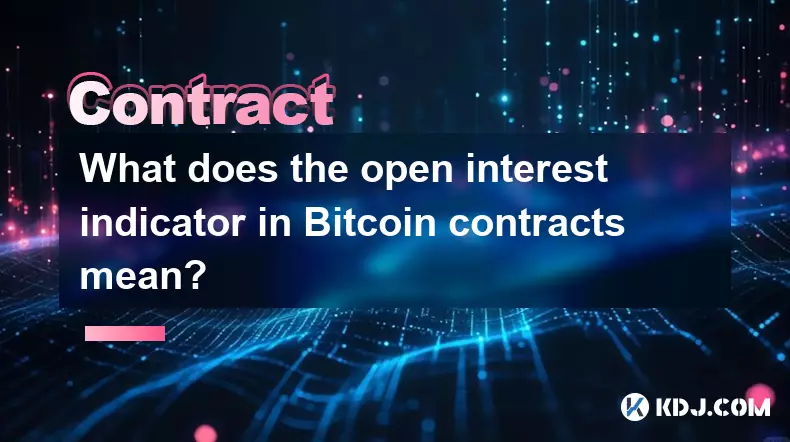
Understanding Open Interest in Bitcoin Futures Markets
1. Open interest refers to the total number of outstanding derivative contracts, such as futures or options, that have not been settled in the Bitcoin market. Unlike trading volume, which measures the number of contracts traded within a specific period, open interest reflects the accumulation of active positions. Each time a new buyer and seller enter a contract, open interest increases by one. When both parties close their positions, it decreases.
2. This metric is essential for gauging market sentiment and liquidity. A rising open interest suggests growing participation and potential continuation of the current trend—whether bullish or bearish. Conversely, declining open interest may signal waning interest or an impending reversal, especially if price movements lack follow-through from new positions.
3. Traders analyze open interest alongside price and volume to validate trends. For instance, if Bitcoin’s price rises along with increasing open interest and volume, it indicates strong conviction among market participants. However, a price increase accompanied by falling open interest might suggest short covering rather than genuine buying pressure.
Open Interest and Market Structure Dynamics
1. The distribution of open interest across different exchanges and contract types reveals insights into where leverage is concentrated. Major platforms like Binance, Bybit, and Deribit publish real-time data on open interest for perpetual swaps and quarterly futures. Disparities between exchanges can highlight regional sentiment differences or regulatory influences.
2. High open interest in perpetual contracts often correlates with increased funding rate volatility. When long positions dominate, longs pay shorts through positive funding rates, creating incentives for contrarian strategies. Sudden spikes in open interest during price surges may indicate leveraged speculation, raising the risk of cascading liquidations.
3. Institutional involvement is increasingly visible in Bitcoin futures open interest, particularly on regulated venues like CME. Growth in CME’s Bitcoin futures open interest often precedes macro-level shifts, as these contracts attract traditional finance players who hedge or allocate capital differently than retail traders.
Interpreting Open Interest During Volatility
1. Sharp increases in open interest during volatile phases frequently precede large price moves. For example, a rapid buildup of long positions amid a rally can create a crowded trade environment. If the price fails to sustain momentum, this concentration triggers mass liquidations, amplifying downward pressure.
2. Liquidation levels are closely tied to open interest density. Exchanges display liquidation heatmaps that overlay price levels with open interest concentrations. Areas with high open interest act as magnets for price due to stop-loss clustering and maker-taker dynamics.
3. During market corrections, declining open interest signals deleveraging. Traders reduce exposure either voluntarily or through forced liquidations. Monitoring this decline helps assess whether selling pressure has been exhausted or if further downside is likely based on remaining open positions.
Common Questions About Bitcoin Contract Open Interest
What happens when open interest rises while the price falls?A simultaneous rise in open interest and falling price typically indicates new short positions entering the market. This shows growing bearish sentiment with fresh capital betting on further declines. It may lead to accelerated drops if leverage is high and liquidation thresholds are breached.
Can open interest predict Bitcoin price direction?Open interest alone cannot predict price direction but enhances context when combined with price action and volume. Rising open interest in alignment with a trend strengthens its validity. Divergences—such as price rising on falling open interest—warn of weak momentum.
How does funding rate interact with open interest?Funding rates adjust based on the imbalance between long and short positions. High open interest dominated by longs results in elevated funding payments, which can discourage additional long entries and trigger rebalancing. Persistent imbalances often correct through price adjustments or position unwinding.
Why do some traders monitor open interest by expiration date?Different futures contract expirations carry distinct open interest profiles. Near-term contracts reflect immediate sentiment, while longer-dated ones indicate strategic positioning. Rollover periods see shifts in open interest as traders exit expiring contracts and enter new ones, sometimes revealing institutional flow patterns.
Disclaimer:info@kdj.com
The information provided is not trading advice. kdj.com does not assume any responsibility for any investments made based on the information provided in this article. Cryptocurrencies are highly volatile and it is highly recommended that you invest with caution after thorough research!
If you believe that the content used on this website infringes your copyright, please contact us immediately (info@kdj.com) and we will delete it promptly.
- Ripple's Stablecoin Expansion: Bahrain, Web3, and RLUSD's Big Push
- 2025-10-10 06:25:13
- Memecoin Trader's Success: Riding the Crypto Wave Like a Pro
- 2025-10-10 06:25:13
- Binance Coin (BNB) Investment: Riding the 2025 Crypto Wave
- 2025-10-10 06:30:01
- Coin, 2025, Bull Run: What's the Hype?
- 2025-10-10 04:45:14
- Bluey Ballot Bonanza: Real Life Coin Tips from Down Under!
- 2025-10-10 05:05:13
- Toncoin (TON) Price Analysis: Crash or Correction? What's a New Yorker to Do?
- 2025-10-10 04:45:14
Related knowledge

How to calculate the ROI for Ethereum contracts?
Oct 09,2025 at 04:36pm
Understanding Ethereum Contract ROI Basics1. Return on Investment (ROI) for Ethereum contracts begins with tracking the initial capital deployed into ...
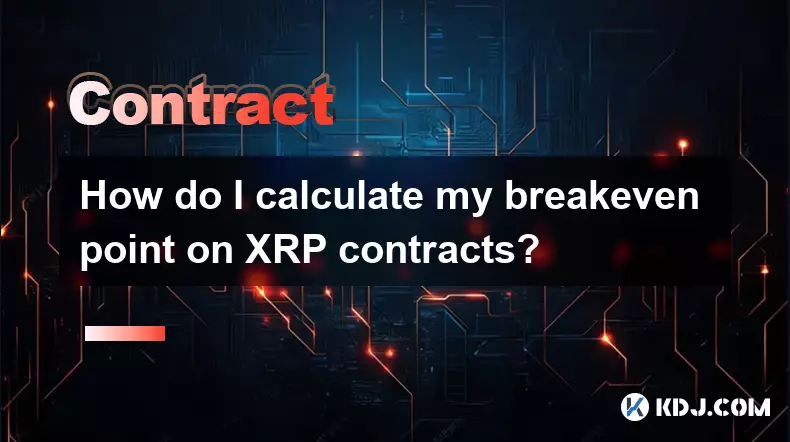
How do I calculate my breakeven point on XRP contracts?
Oct 09,2025 at 08:36pm
Understanding the Breakeven Point in XRP Futures TradingCalculating the breakeven point for XRP contracts is essential for traders who engage in futur...
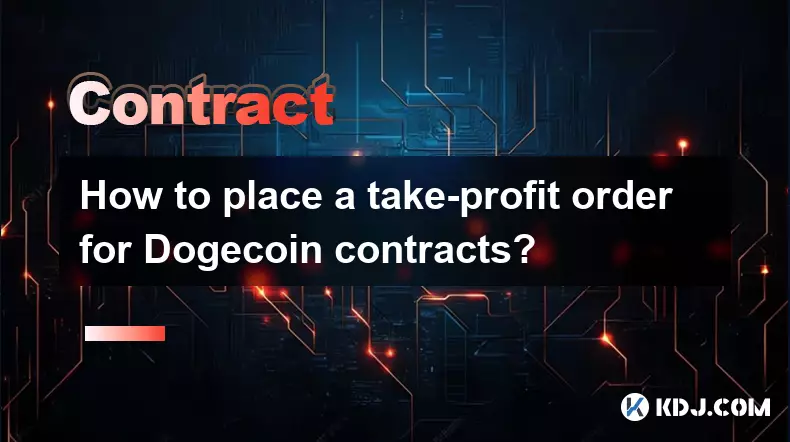
How to place a take-profit order for Dogecoin contracts?
Oct 10,2025 at 05:01am
Understanding Take-Profit Orders in Dogecoin Futures Trading1. A take-profit order is a tool used by traders to automatically close a position when th...

What are the settlement procedures for XRP contracts?
Oct 09,2025 at 04:01pm
Understanding XRP Futures and Derivative Contracts1. XRP derivative contracts are typically offered by cryptocurrency exchanges that support margin tr...

How to reduce trading fees for Bitcoin contracts?
Oct 09,2025 at 02:37pm
Understanding Bitcoin Contract Trading Fees1. Trading fees on Bitcoin contracts are typically charged by exchanges for executing buy and sell orders. ...
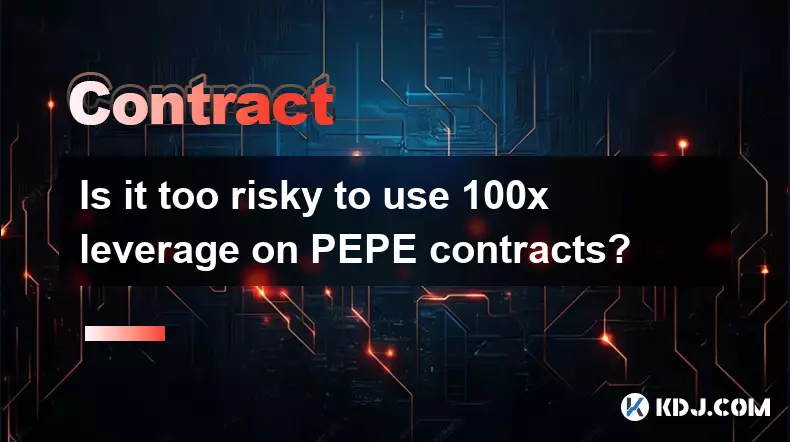
Is it too risky to use 100x leverage on PEPE contracts?
Oct 09,2025 at 04:18pm
Understanding 100x Leverage in PEPE Contracts1. Trading PEPE contracts with 100x leverage allows traders to control a much larger position using a sma...

How to calculate the ROI for Ethereum contracts?
Oct 09,2025 at 04:36pm
Understanding Ethereum Contract ROI Basics1. Return on Investment (ROI) for Ethereum contracts begins with tracking the initial capital deployed into ...

How do I calculate my breakeven point on XRP contracts?
Oct 09,2025 at 08:36pm
Understanding the Breakeven Point in XRP Futures TradingCalculating the breakeven point for XRP contracts is essential for traders who engage in futur...

How to place a take-profit order for Dogecoin contracts?
Oct 10,2025 at 05:01am
Understanding Take-Profit Orders in Dogecoin Futures Trading1. A take-profit order is a tool used by traders to automatically close a position when th...

What are the settlement procedures for XRP contracts?
Oct 09,2025 at 04:01pm
Understanding XRP Futures and Derivative Contracts1. XRP derivative contracts are typically offered by cryptocurrency exchanges that support margin tr...

How to reduce trading fees for Bitcoin contracts?
Oct 09,2025 at 02:37pm
Understanding Bitcoin Contract Trading Fees1. Trading fees on Bitcoin contracts are typically charged by exchanges for executing buy and sell orders. ...

Is it too risky to use 100x leverage on PEPE contracts?
Oct 09,2025 at 04:18pm
Understanding 100x Leverage in PEPE Contracts1. Trading PEPE contracts with 100x leverage allows traders to control a much larger position using a sma...
See all articles

























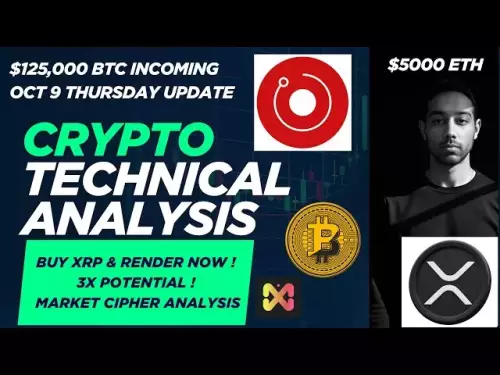
![🚨IS VECHAIN (VET) A DEAD COIN ?? PRICE ANALYSIS [GET READY NOW] 🚨IS VECHAIN (VET) A DEAD COIN ?? PRICE ANALYSIS [GET READY NOW]](/uploads/2025/10/09/cryptocurrencies-news/videos/vechain-vet-dead-coin-price-analysis-ready/68e7b200b067b_image_500_375.webp)















































